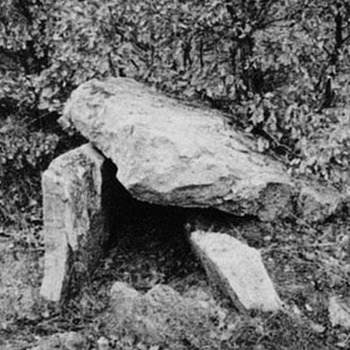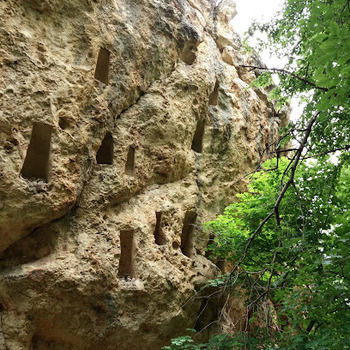Thracian dolmens Oryahovo-Vaskovo
Overview
The village of Oryahovo has a long and ancient history. The oldest cultural and historical traces in the land of the village date back to the era when the Thracians were the main population in the region. Traces of the ancient way of life and culture of the Thracians are preserved to this day. In the past, this area has been the subject of research and excavations by prominent archaeologists, ethnographers and historians. As early as the beginning of the 20th century, the prominent historians the brothers Herman and Karel Shkorpil and Prof. Georgi Bonchev. About 80 preserved Thracian mounds and dolmens in the vicinity of the village have been reported. They are most numerous in the areas of Kerez Dere and Eshmedjika. The dolmen in the Kanakliikata area is also remarkable for its size. Some of the open dolmens are designated as tourist sites.
During the Roman era in this area there was an active commercial, economic and administrative life. A number of historical records say that the great Roman road Via Militaris passed southwest of the ancient settlement, the remains of which can be seen in the area of Dussault. 400 m south of the road and 2 km from the village in the Sara-Khan area you can see the ruins of an ancient building (a rectangle with a vestibule to the east) - probably a Roman station.
In the old settlement of Oryahovo are sought the remains of the old medieval town of Agatoniki - one of the ten bishoprics subordinate to the Plovdiv diocese. Information about this city can be found in an inscription of Emperor Gordian from the III century, which indicates that Agathoniki is located 34 miles from Adrianople. In addition, written data on the existence of the city can be found in the Suleymankiy inscription of Omurtag and the chronicles of the Byzantine historian Anna Comnina, who mentions Agathoniks in connection with the wars of Alexius I Comnenus with the Cumans. Traces of a Byzantine settlement can be found 2 km north of Oryahovo, in the area of Dzhevezlika. Here in the Klise Bunar area the foundations of a one-nave church have been excavated. To the north of the settlement, on the ridge of the Mandrata and Kushe-kaylar areas, at the beginning of the century there were remains of a medieval round tower.
A pair of unglued dolmens east of the village of Oryahovo in the direction of the village of Vaskovo, in the Eshmedzhik area. Quite destroyed.
Both dolmens are not in good condition, peeled off, the lids are not preserved. Both are single-chamber with dromos, and their facade is common. Their mound is also common, it reached under the covers - the facade stones were visible above it even before the excavations.
Only the lower part of the face plate is preserved in the large one. Another faceplate is placed on the floor of the camera. It was probably the first to break during construction. Then it was necessary to make a second, of which only the lower half has survived to this day.
The whole face plate is preserved in the small one, but it also seems to have broken during the construction - the scale is shale, ie. very fragile. However, it was not abandoned, and its two parts were appropriately brought together during installation.
The pair of dolmens was discovered, excavated and studied by G. Nehrizov and St. Iliev in 2004. Finds - primarily in the small dolmen: brooches, earrings, bracelets, fragments of human skulls (at least five).
To the exit of the village of Oryahovo the road is asphalted - settlement and inter-settlement, passable in winter conditions, and from the branch of the road to the dolmens a gravel forest road. It is desirable that the cars be off-road.
Recommended
- Stone bridge - Biserska river
- Bakarlia Protected Area
- Castra-Rubra Fortress
- Mezek Fortress
- Mezek tomb
- The bridge of Mustafa Pasha and others


 Bulgarian
Bulgarian Romanian
Romanian

